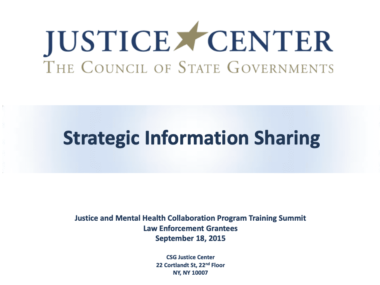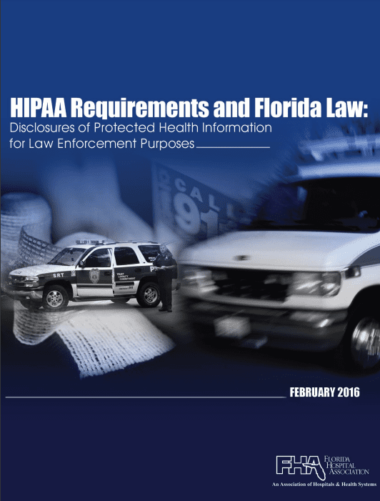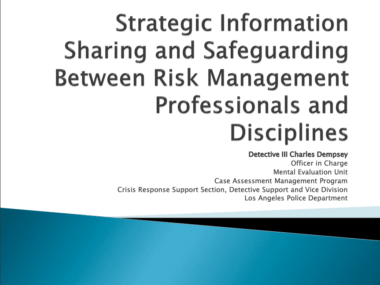Establishing an Information-Sharing Approach
PMHCs can increase their capacity to safely and effectively share information by first working together to understand privacy law, and then establishing shared goals and clear protocols among law enforcement leaders and their behavioral health partners, and providing training before an officer encounters a crisis situation. Policies and procedures should be developed and adopted by all PMHC stakeholders and make clear what information can be shared, with whom, and for what purposes. Establishing this information-sharing approach from the outset of the PMHC helps to build trust among key partners and ensures that people at all organizational levels—from leadership to front-line staff—understand and are committed to appropriately using and sharing information.
Forming Strong Collaborations
Leaders and line staff from law enforcement, health, local government, and the community each have a critical role to play in fostering effective PMHCs. An important basis for this cross-system collaboration is the articulation of shared goals. These goals help to establish buy-in among the partners, guide what information may be collected and shared during an encounter, and inform which partners are involved in various scenarios. Before a crisis situation ever occurs, PMHC partners should have a clear understanding of their respective roles in collecting and sharing relevant behavioral health information in handling individual cases. These collaborative efforts can also help to identify current gaps in services and intervention strategies to improve outcomes for people with behavioral health needs.
The following tools have been created or used by jurisdictions across the country to form strong collaborations among their law enforcement and behavioral health partners. These resources can serve as templates for any community seeking to begin or strengthen their efforts.
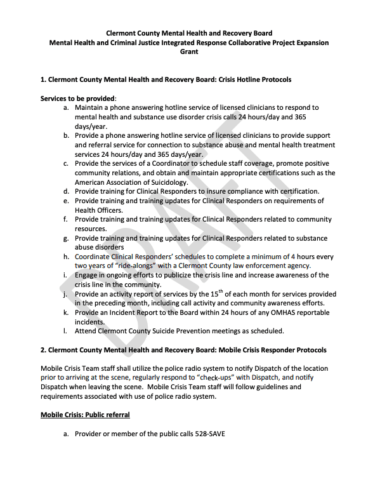
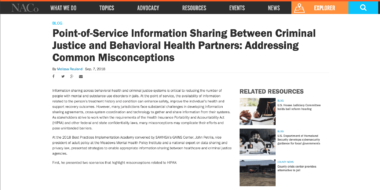

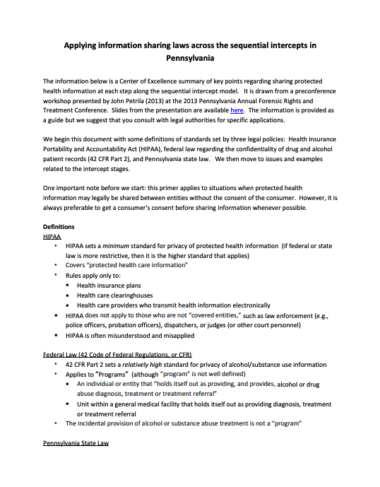
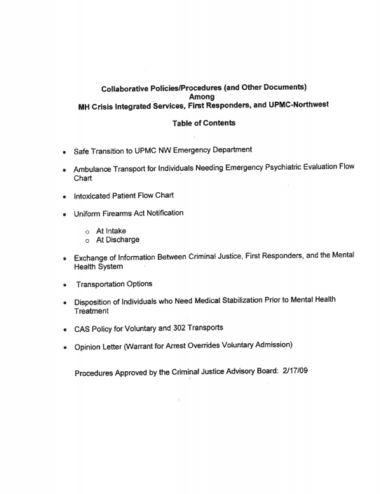
Developing Policies and Procedures to Guide Information Sharing
Clearly written policies and procedures are critical to equipping officers with the knowledge and skills needed to respond to people in mental health crisis. These policies and procedures should be widely disseminated and articulate the purpose of information sharing, define frequently used terms, outline roles and responsibilities, and delineate who has access to protected health information. They should also set guidelines on what can and should be shared among law enforcement, behavioral health, and other health staff during a crisis and can inform key decisions related to 911 dispatch and triage, diversion options, connections to services, and follow-up or discharge planning. When writing these policies and procedures, law enforcement leaders should ensure that their behavioral health and community partners are included in the decision-making process; that perspectives from people who have mental illnesses are considered; and that the policies align with the agency’s and community’s needs and are culturally responsive. Additionally, someone or a committee should be charged with tracking changes to privacy law and determining when or if existing policies and training need to be updated.
The following policies and procedures have been created by jurisdictions across the country to support their information-sharing efforts. These resources can serve as templates for any community seeking to begin or strengthen their efforts.
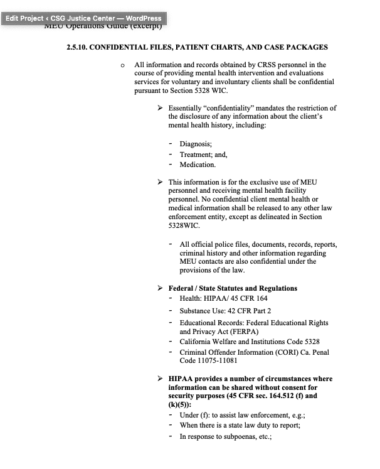
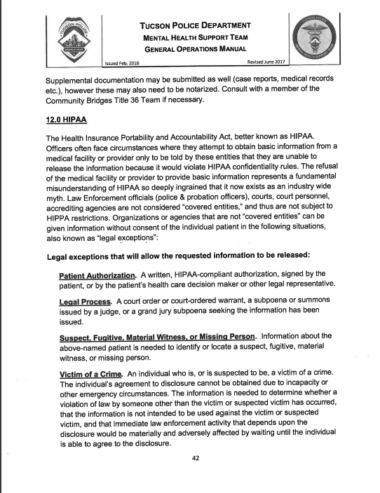
Establishing Formal Information-Sharing Agreements
In most cases, people must provide consent to have their health information shared by a treatment provider; however, a number of exceptions exist relevant to the work of law enforcement. These exceptions recognize that law enforcement officers may need immediate access to health information to protect public safety or otherwise enforce the law. Formal information-sharing agreements help PMHCs protect people’s privacy while also supporting the need to share health information among relevant partners. These agreements should be aligned with federal and state privacy laws and clearly articulate what information can be shared among law enforcement and behavioral health staff during an encounter, as well as how this information can be used. In addition, information-sharing agreements often address mechanisms for sharing information, duration of the agreement, and the process for making modifications.
The following agreements and templates have been created or used by jurisdictions across the country to support their information-sharing efforts. These resources can be used as templates for any community seeking to begin or strengthen their efforts. However, any agreements or legal documents should be developed in partnership with local counsel who are familiar with the relevant laws in your jurisdiction.
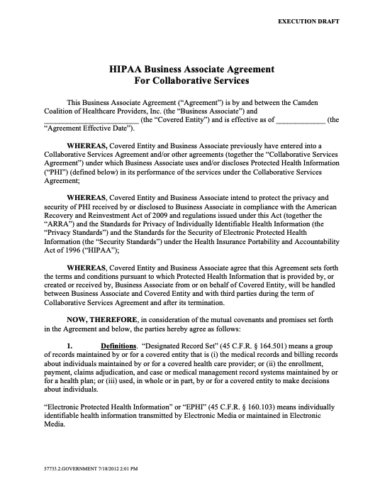
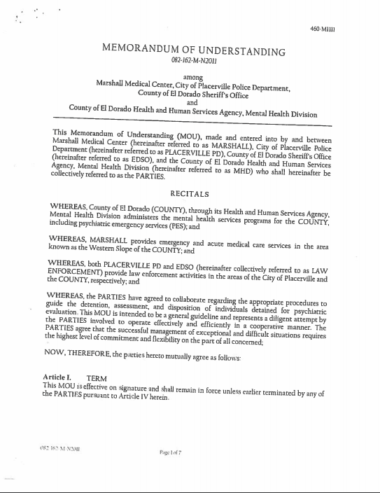
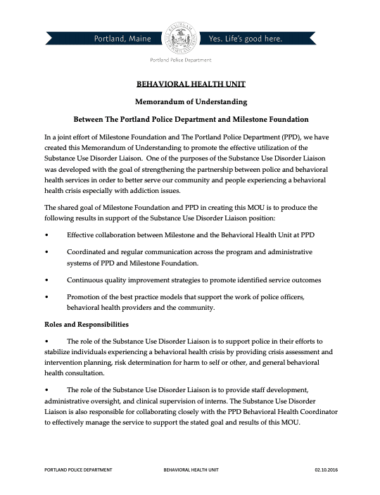
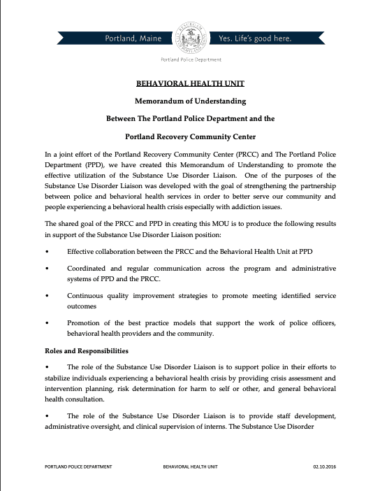

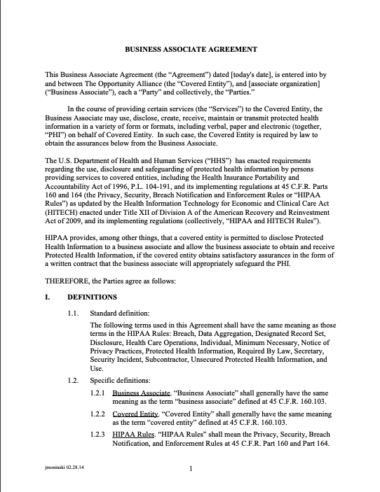
Providing Training to Personnel
Training law enforcement and behavioral health personnel on federal and state privacy laws and regulations as well as local information-sharing protocols on a regular and consistent basis can help to ensure that behavioral health information is appropriately shared when needed. Training topics may include the federal Health Insurance Portability and Accountability Act (HIPAA), the Family Educational Rights and Privacy Act (FERPA), and 42 C.F.R. Part 2 for substance use disorder patients, as well as any state or local privacy laws relevant to your jurisdiction. While training alone does not ensure proper handling of sensitive information during a crisis, it is essential to helping law enforcement officers and behavioral health staff better understand what information they can legally share on the scene. When completed regularly (at least once a year), this training also helps ensure that officer and staff practices are aligned with and kept up-to-date with any changes in standards on sharing behavioral health information. Delivery of this training should come in experiential, lecture, and case study or scenario-based styles to reinforce the regulations and protocols through multiple approaches.
The following webinars and resources have been created or used by jurisdictions across the country to support their training efforts related to information sharing. These resources may be used by any community seeking to begin or strengthen their efforts.
